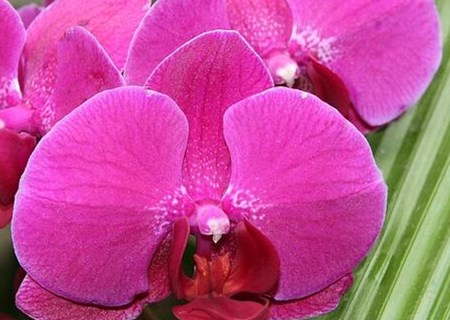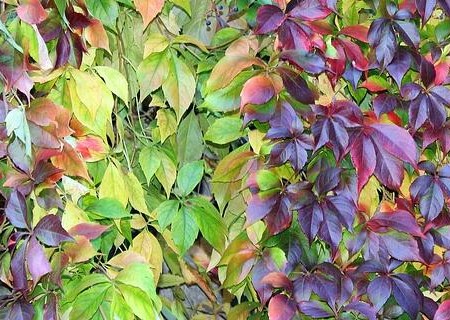Why does the perennial herb Phalaenopsis not bloom? What do you need to pay attention to in planting? How do you breed? Is it poisonous?
Phalaenopsis was born in the tropical rain forest, the nature likes to be warm and afraid of cold. The suitable temperature for growth is 15-20 ℃, and it will stop growing below 10 ℃ in winter, and it is easy to die below 5 ℃. It is a kind of perennial herb. Do you know why Phalaenopsis doesn't bloom? What do you need to pay attention to in planting? How do you breed? Is it poisonous?

Why Phalaenopsis doesn't blossom
Main reasons and analysis
1. the air in the cultivation environment is dry.
Excessive strong light exposure and insufficient water supply will lead to wilting and yellowing of leaves, which is disadvantageous to flower bud differentiation and flowering.
2. the temperature is not properly controlled.
Poor temperature control will also hinder the normal development of plants and hinder the growth of flower buds and prevent them from blooming. Phalaenopsis is suitable to be cultivated in a high temperature environment, even if there are buds sprouting, if the indoor temperature is too low, it will make the buds withered and early fall, which can not meet the requirements of flowering.
3. Imbalance in the proportion of fertilization.
Excessive nitrogen application and lack of phosphorus and potassium fertilizer will also inhibit flower bud differentiation, resulting in non-flowering or less flowering. If the concentration of fertilizer is too high, especially after the formation of flower buds, it is easy to make the buds wither. If alkaline water and fertilizer is applied for a long time, it will hinder the root system to absorb water and nutrients, making it difficult for Phalaenopsis to bloom.
4. Careless watering
When watering, if water splashes into the flower center at the base of the leaf, it will cause the rot of the leaf base and make the plant grow abnormally and affect the flowering. Therefore, when spraying water, the leaf surface can be sprayed to prevent mistakenly spraying to the growing point. When the bud is formed, stop spraying water to the flower to avoid the occurrence of bud drop.
5. Poor ventilation
Flowering period should pay special attention to proper ventilation, if the air circulation is not smooth, it is easy to make the top of the flower stem withered and withered, and there will be buds falling.
What do you need to pay attention to when planting
1. Phalaenopsis likes high temperature and humidity, and requires relatively high temperature during the seedling growth period: the lowest indoor temperature should be kept above 15 ℃, and it is best to keep it above 18 ℃ at night (which is conducive to fixing the CO2 at night). The temperature is high in summer, and the room must be ventilated. If the temperature is higher than 32 ℃, Phalaenopsis will be dormant, which must be observed and adjusted timely. In autumn and winter, winter and spring exchange to grasp the temperature changes, but can not put flowers next to the heating, as far as possible to ensure fresh indoor air circulation. The suitable temperature for flowering period should be about 15 ℃. If the temperature is too high, the flowering period can be shortened easily. It has been proved by some experiments that 10 ℃ can also guarantee the flowering period, but if the orchid is taken from a place with relatively high temperature, the temperature can not drop all of a sudden, it should be given a period of over-domestication.
2. Phalaenopsis belongs to epiphytic orchid, which is aerial and often exposed outside the nutrition bowl, which is the need of growth characteristics, which is to absorb water from the moist air and to maintain the humidity needed for growth. Phalaenopsis is soilless cultivation with aquatic plants as the matrix, and should not be watered too much, otherwise the ventilation will be reduced, the roots will rot, and the leaves will grow. The principle of watering is that the matrix is dry and then watered thoroughly, and it is most appropriate for the water temperature to be close to the indoor temperature. When the indoor air is dry, it can be sprayed directly to the leaf surface (4-6 times a day); watering should be controlled during flowering to reduce the metabolic rate and prolong the flowering period.
3. Phalaenopsis prefers shade. Do not direct sunlight in summer, do not put on the windowsill, avoid plant damage, flowering should be placed on the indoor flower rack, or in the living room. The growth of flowers and seedlings should be placed in indoor astigmatism.
4. Special orchid fertilizer should be applied during the growing period. If not, general compound fertilizer is also acceptable. The principle of fertilization is "eat less and eat more". During the peak growth period, the seedlings are fertilized with 1000-2000 times liquid, once a week or three times a week; another method is 3000-4000 times liquid, fertilizing with water every day.
5. The flowering period of Phalaenopsis can generally reach 2-3 months. When the flowers wither, it is best to cut the flower stem from the base and let the plant dormancy adjust; on the other hand, when the matrix is aging, it should be changed in time, otherwise the air permeability is poor, which will cause root rot. In addition, it should be noted that after changing the basin, do not immediately watering or fertilization, but first spray fungicide, a higher dose, about a week into normal management. After the arrows are cut off, in the plant adjustment stage, some nutritional fertilizers can be applied, and the proportion of nitrogen, phosphorus and potassium is about 19-19-19 to 21-21-21 (nitrogen, scale and potassium respectively account for 19% of the total) pay attention to the collocation of trace elements. After a period of rest and recuperation can be carried out to promote flowering, first of all, according to the date of flowering, according to the general growth situation, from the extraction of the gun to the opening of the first flower takes four months, and to fully open, at least another month or even longer, Phalaenopsis flowering is caused by low temperature stimulation, when promoting flowering treatment, the temperature difference between day and night needs about 10 ℃, and the light intensity should also be relatively increased, but it should not be direct. Flower-promoting fertilizer is applied about 35-40 days before flowering, which requires high phosphorus and potassium, but the general reference ratio of nitrogen fertilizer is about 10-30-20. Low temperature treatment should be guaranteed for more than one month, and this standard can be basically reached in the north from September and October.
6. What should be paid attention to during flowering is gray spot, mainly due to not paying attention to the water droplets on the petals, or other diseases, which hinder the ornamental value of flowers. Therefore, do not spray fat water on the petals.
Third, how to reproduce Phalaenopsis
Pedicel budding and reproduction
First cut off the post-flowering part of the pedicel, and then carefully use a blade to remove the bracts of the first to third internodes at the upper end of the pedicel to expose the bud points in the internodes.
Apply hormones such as sprouting agent or indolebutyric acid evenly with cotton swabs on the exposed Internode bud points.
After smearing, put the plant in a semi-shaded place and maintain the cultivation temperature of 25-28 ℃. Generally, the buds can grow leaves after 2-3 weeks, and grow into Phalaenopsis seedlings with 3-4 leaves and aerial roots after 3 months.
Finally, the seedlings are cut off and treated in the pot, and a new plant can be obtained.
Broken heart to accelerate budding and reproduction
First remove the heart leaf with the highest position at the top of the stem, and pay attention to destroying the growth point on the stem tip so that it can no longer grow upward.
After the wound is dried, it can be sterilized and sterilized with fungicides. After a period of time, 2-3 new buds can sprout on the stem nodes near the base.
When the new bud grows and the base grows out of the root, it can be cut off and planted, and a new plant can be obtained.
Stem-cutting breeding method
The principle of stem cutting and reproduction is similar to that of the second method, which also induces the growth of latent buds by destroying the growth point of stem tip.
After the plant grows until the stem node is longer, cut off the upper part of the plant with roots with sterilized blades or scissors and transplant it into a new basin to continue to grow. It is necessary to give an appropriate amount of water to the part with roots at the lower end. It will soon be able to sprout 1-3 new buds (the number is related to the characters and management methods of the plant).
If the stem of a plant is longer, it can be divided into several segments, each with 2-3 internodes, or a segment with more than 2-3 cm and more than one root, which may develop into a new plant.
If the roots of the plant have withered, this method will not work.
Is Phalaenopsis poisonous
Since Phalaenopsis is not poisonous, there is no problem with putting it indoors.
However, the editor would like to remind you that whether it is Phalaenopsis or not, we all know that plants carry out photosynthesis and release oxygen during the day, but at night, plants breathe oxygen and release carbon dioxide, so, it's best not to put plants in the bedroom!
Time: 2019-03-18 Click:
- Prev

What are the seed planting methods of epiphytic Phalaenopsis? When will it blossom? What are we going to do after flowering?
Phalaenopsis belongs to the genus Phalaenopsis of Orchidaceae and is an epiphytic orchid. The thick white air roots of Phalaenopsis are exposed around the leaves, which not only absorb nutrients in the air, but also grow and photosynthesis. Do you know the seed planting methods of Phalaenopsis? When will it blossom? How to deal with it after flowering? New year's season
- Next

What are the seed planting methods of Parthenocissus parthenocissus in the grape family? What are the uses? What's the difference between ivy and ivy?
Parthenocissus is another name for a variety of plants, bundled stone dragon, maple vine, small insect lying grass, red silk grass, red kudzu, lying mountain tiger, red grape vine, Bashan tiger, grape plant. Do you know what are the seed planting methods of Parthenocissus? What are the uses? What's the difference between ivy and ivy? It is common to climb on walls and rocks.
Related
- Fuxing push coffee new agricultural production and marketing class: lack of small-scale processing plants
- Jujube rice field leisure farm deep ploughing Yilan for five years to create a space for organic food and play
- Nongyu Farm-A trial of organic papaya for brave women with advanced technology
- Four points for attention in the prevention and control of diseases and insect pests of edible fungi
- How to add nutrient solution to Edible Fungi
- Is there any good way to control edible fungus mites?
- Open Inoculation Technology of Edible Fungi
- Is there any clever way to use fertilizer for edible fungus in winter?
- What agents are used to kill the pathogens of edible fungi in the mushroom shed?
- Rapid drying of Edible Fungi

